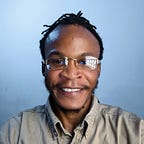Tomorrow is Animated. Today is Tomorrow.
It is incredibly difficult to know where our industry is headed — almost as challenging as defining “motion design” itself. Where is animation or experiential or VR/AR going over the next five years — or even the next five months? Then there are the tools we use every day, and the ones on our list to learn. Does anyone have the answers?
All we know for sure is, the future is now and the future of UX is animated. With delightfully (or terribly) animated UI experiences becoming increasingly ubiquitous, UX designers are now tasked with designing and, often, executing on the animated aspects of interfaces. This is both a great opportunity for UX designers to enrich their work and a daunting new skill to master.
For years, Motion Graphics has been seen as a specialty skill, usually used by people who have trained their entire lives into things such as television broadcasts and films, etc. In the near future, I can see people slowly associating graphics design with more moving imagery rather than the static imagery that they are associated with today.
Many people think motion design is just about creating delight, but it’s so much more than that. User experience is an ongoing story, and motion design helps create the flow of that story. Motion design is an essential tool in the designer’s toolkit that extends the visual language and evokes the emotion of the brand.
Motion design helps your users’ brains orient themselves within any given screen and guides them to the actions they need to make. It also creates a connection between the interaction and visual language that clearly communicates the story of the experience. The purpose of motion design is not only to delight but also to convey the brand attributes and inform.
Motion often drives emotion. It can be the necessary spice for your website design to taste perfect for users. It adds dynamics and breathes life into a static UI. Fun, intriguing, and appealing — it may be different and adds charm to a website.
By now, animation has proven its staying power in mediums far older than web design. In recent years, it has become one of the most popular web design trends too. From animated logos, liquid motion, and kinetic typography to loading animation, hover effects, and other types — there are so many incredible options to use it in web design and breathe life into website layouts. Hopefully, this brief overview of the largest web animation trends will inspire you to do new experiments in web design and create even more exciting digital experiences.
